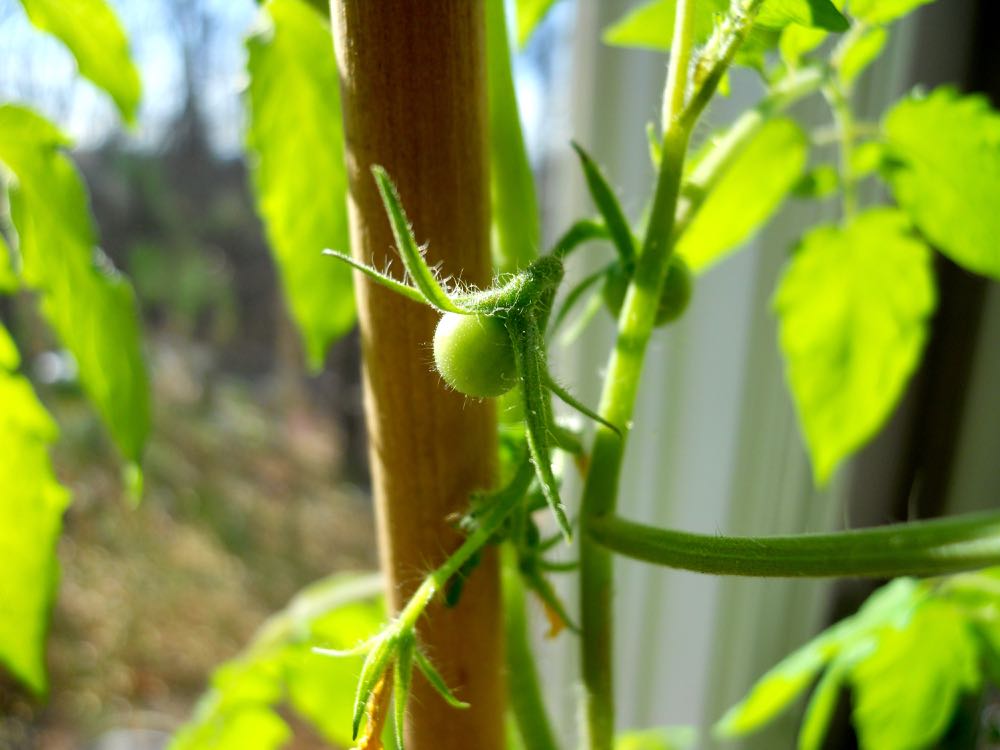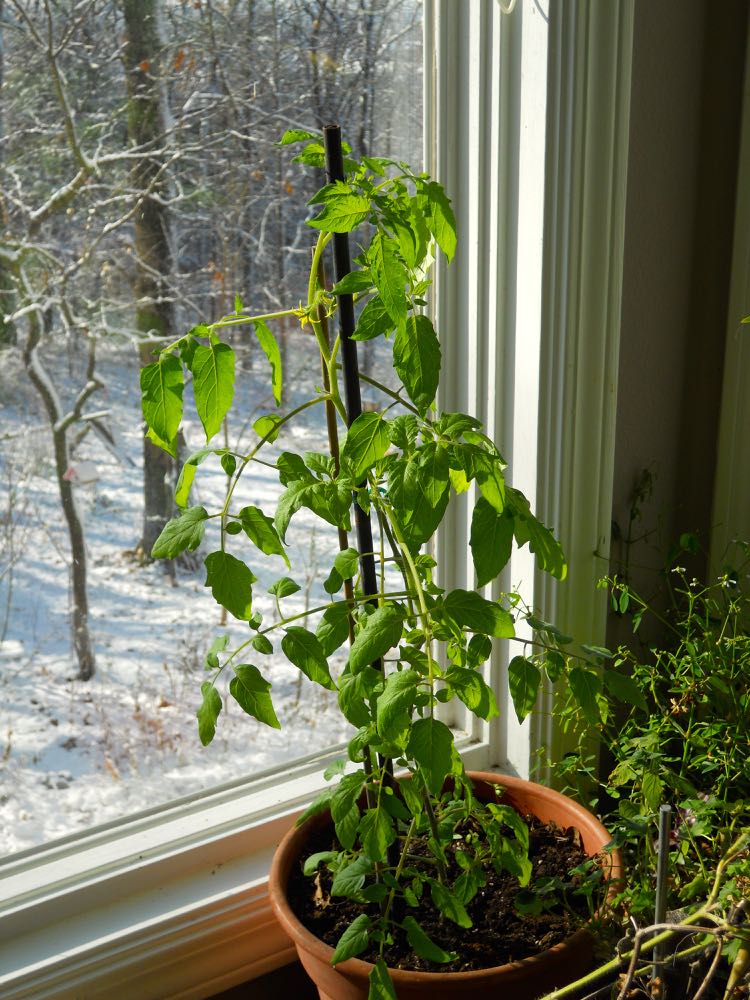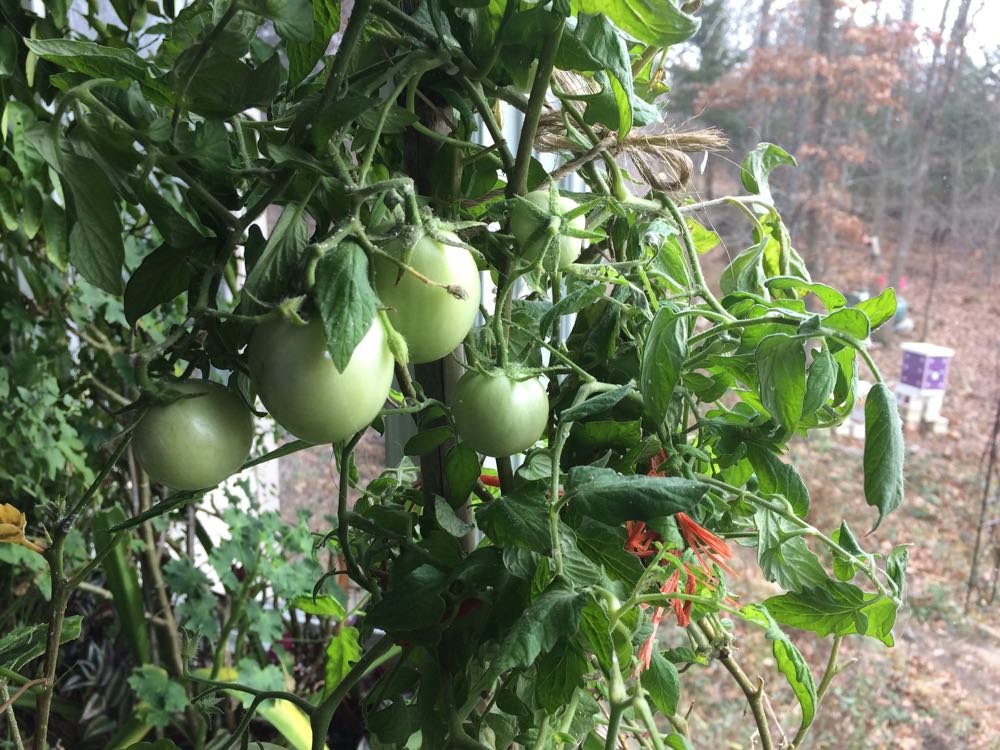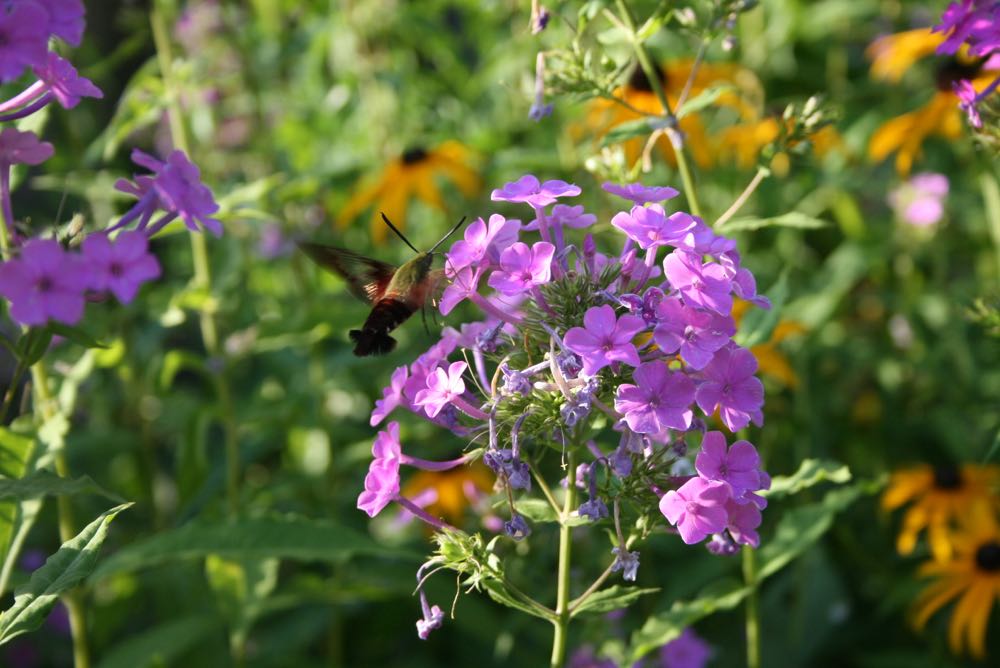Miriam Tomato Plant Has Fruit!
/Miriam Tomato Plant Has Fruit!
So excited, I almost feel like I should send out baby announcements!
For those of you just joining this saga, every year I winter over one tomato plant in my sunny, inside bay window. Tomatoes are originally from tropical Peru, where they grow as perennials, or plants that live for many consecutive years.
I don't grow a traditional garden or farm a large plot, I have more in common with urban area residents who want fresh herbs and a few favorite vegetables handy during the growing season. I call it my pot garden since I grow those on my deck but that's a whole different story.
I have been growing a tomato in a pot inside over winter for a good 20 years. About a decade ago, I had a tomato plant that survived for 4 years living on my deck during summer and wintering over in my living room. One of my cats knocked it over and broke the main stem or I think it would have happily lived a few more years as long as I brought it inside over winter.
Last year when I posted the tomato plant I heard from some of my newspaper gardening article readers that it was impossible or I was "cheating" so here we go again, proof that yes, you can grow a tomato plant successfully indoors over winter.
This year, I was behind getting a tomato plant ready to move inside and initially thought I would skip it. As I was mulching flowers beds, however, I found a tiny, 2-inch high unidentified tomato seedling valiantly growing so I pulled it out and named it "Miriam." I do know the seedling came from my gardening friend Tom's place but he doesn't remember what species was in the hyssop plant starts he gave me.
After adding crushed egg shells to the bottom of the pot and adding new potting soil, Miriam settled into her new digs in one of my bay windows.
Miriam the seedling is now almost 3 feet tall with flowers. Not just flowers but flowers I pollinated with a Q-tip, and now there is fruit, I never tire of finding the first tomato forming.
At first I thought it was just one tomato. As I was taking photos, I noticed a second one, and then a tiny third one so my pollinating technique is working again.
Outside, tomatoes depend on native bees to move pollen from one flower to another one. Since Miriam has spent her entire flowering life inside without bees, it was hard to guess whether my fumbling pollination technique would take.
In another few weeks, we should have confirmation of what kind of tomato plant she is. As far as I'm concerned, she's a winner!
Charlotte




















